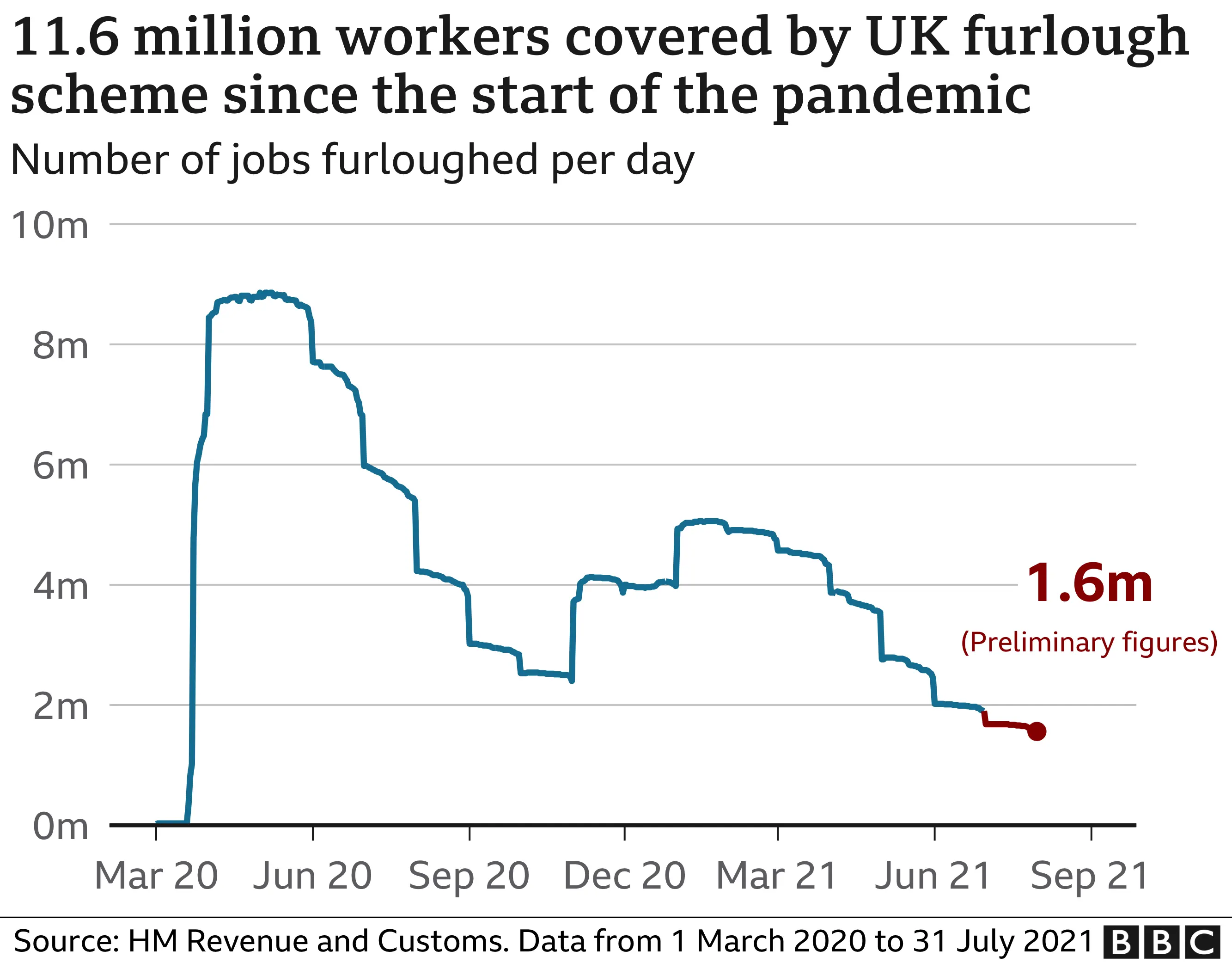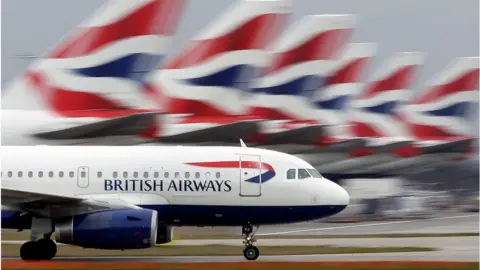Numbers on furlough drop to new low
 Getty Images
Getty ImagesThe number of people on furlough has continued to fall, with young people leading the way, latest figures show.
At the end of July, 1.6 million people were still on furlough, the lowest level since the start of the pandemic and 340,000 fewer than a month earlier.
But older people and the travel sector did less well, with half of eligible travel workers still on the scheme.
The Resolution Foundation said the numbers of people coming off furlough had "slowed to a trickle".
Since the start of the coronavirus pandemic, 11.6 million workers have benefited from the government programme, which is due to be wound up at the end of this month.
At the peak of the pandemic in May last year, nearly nine million people were on furlough.

There had been "a striking fall" in the number of young people on furlough, the Treasury said.
A total of 121,600 people aged 18 to 34 came off the scheme during the months of June and July, it added.
The number of people on furlough in the arts, entertainment and recreation sector, as well as accommodation and food services have seen particularly large reductions in the number of jobs on furlough, the Treasury said.
Numbers furloughed from these sectors declined by 26,200 and 96,700 in July respectively.
Travel troubles
However, concern remains over the number of people in the travel industry who are still on furlough.
According to the Treasury figures, 51% of people employed in passenger air transport and 41% of travel agency and tour operator workers are still on furlough.
Last month, British Airways warned it was facing a "serious" problem over wage costs, which would "steeply increase" after the end of the furlough scheme.
Older people are also more likely to be still on furlough. Those aged 65 and over had the highest rate of furlough, at 8%.
"As the end of the furlough scheme looms into view, men, older people and travel sector workers are particularly at risk," said Sarah Coles, personal finance analyst at Hargreaves Lansdown.
She described the rates of furlough in the travel industry as "alarmingly high", adding: "Where an entire industry is struggling, it's going to make life even harder if the end of furlough means you lose your job.
"There just aren't going to be enough travel industry jobs around, so an awful lot of people will have to move industry."
 Getty Images
Getty ImagesAt the same time, latest figures for the Self-Employment Income Support Scheme (SEISS) have shown a consistent fall in demand, with about 800,000 people claiming the most recent grant.
Across all five grants available under SEISS, 9.9 million claims have been made and more than £27bn has been claimed by almost three million people.
Charlie McCurdy, economist at the Resolution Foundation, said the number of people coming off furlough over the summer had "slowed to a trickle".
"As a result, up to a million employees could still be on furlough when the scheme closes at the end of this month," he added.
"While we expect most of these staff to return to their previous roles, a significant number will not, and we could see a fresh rise in unemployment this autumn.
"Given these circumstances, now is not the right time to cut Universal Credit by £20 a week. The government must change course."

Are you currently on furlough? Share your experiences by emailing haveyoursay@bbc.co.uk.
Please include a contact number if you are willing to speak to a BBC journalist. You can also get in touch in the following ways:
- WhatsApp: +44 7756 165803
- Tweet: @BBC_HaveYourSay
- Upload pictures or video
- Please read our terms & conditions and privacy policy
If you are reading this page and can't see the form you will need to visit the mobile version of the BBC website to submit your question or comment or you can email us at HaveYourSay@bbc.co.uk. Please include your name, age and location with any submission.